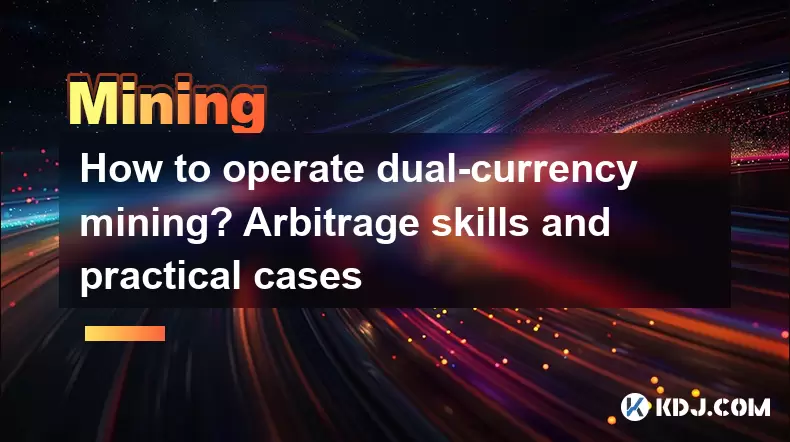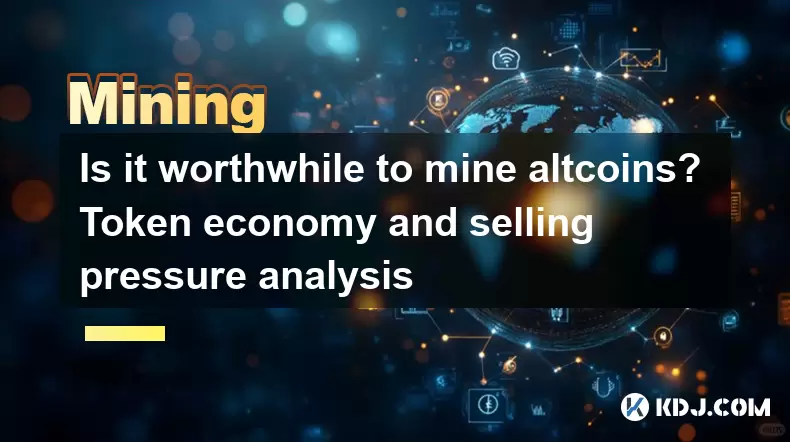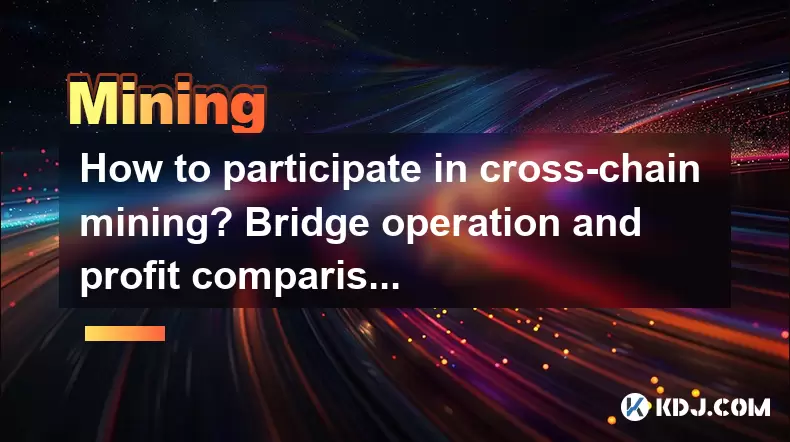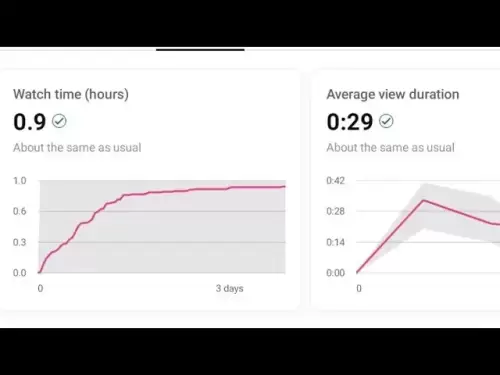-
 Bitcoin
Bitcoin $103,456.1111
0.49% -
 Ethereum
Ethereum $2,414.9631
0.02% -
 Tether USDt
Tether USDt $1.0006
0.05% -
 XRP
XRP $2.1083
0.24% -
 BNB
BNB $634.8760
-0.76% -
 Solana
Solana $139.8437
1.94% -
 USDC
USDC $0.9998
-0.01% -
 TRON
TRON $0.2737
0.97% -
 Dogecoin
Dogecoin $0.1602
0.20% -
 Cardano
Cardano $0.5737
1.08% -
 Hyperliquid
Hyperliquid $32.9779
-2.54% -
 Bitcoin Cash
Bitcoin Cash $474.8886
-1.80% -
 Sui
Sui $2.6272
-1.99% -
 Chainlink
Chainlink $12.4878
0.14% -
 UNUS SED LEO
UNUS SED LEO $8.9234
0.35% -
 Stellar
Stellar $0.2411
-0.18% -
 Avalanche
Avalanche $17.0274
-0.70% -
 Toncoin
Toncoin $2.8936
-1.11% -
 Shiba Inu
Shiba Inu $0.0...01112
-0.58% -
 Litecoin
Litecoin $82.6982
1.33% -
 Hedera
Hedera $0.1423
-0.05% -
 Monero
Monero $314.8455
3.26% -
 Ethena USDe
Ethena USDe $1.0006
0.01% -
 Polkadot
Polkadot $3.4043
1.14% -
 Dai
Dai $0.9999
0.01% -
 Bitget Token
Bitget Token $4.2848
-0.13% -
 Uniswap
Uniswap $6.8748
-5.45% -
 Pepe
Pepe $0.0...09661
0.52% -
 Pi
Pi $0.5359
1.19% -
 Aave
Aave $242.9168
-1.03%
How to operate dual-currency mining? Arbitrage skills and practical cases
Dual-currency mining lets miners earn two cryptocurrencies simultaneously, diversifying income and boosting profits through market volatility.
Jun 22, 2025 at 03:42 am

Understanding Dual-Currency Mining
Dual-currency mining is a concept in the cryptocurrency space where miners earn two different types of cryptocurrencies simultaneously by contributing their hashing power to specific pools or platforms. This method allows for diversified returns and potentially higher profits compared to traditional single-coin mining.
The mechanism typically involves staking one asset while earning another, or using a dual-token reward system from certain mining pools. For example, some platforms offer rewards in both Bitcoin (BTC) and a secondary token like Filecoin (FIL) or Ethereum (ETH). The core idea is to take advantage of market volatility and price differences between the two coins to maximize profit.
Setting Up Your Mining Environment
Before diving into dual-currency mining, it's essential to configure your hardware and software properly. Here are the key steps:
- Choose compatible mining hardware: Ensure that your ASIC or GPU supports the algorithms required for the primary coin being mined.
- Select a reliable mining pool: Look for pools that explicitly support dual-currency mining or offer split rewards.
- Install mining software: Use well-known tools such as CGMiner, BFGMiner, or NiceHash, which can be configured for multi-reward setups.
- Connect to the pool: Input the correct stratum URL and worker credentials provided by the mining pool.
- Monitor performance: Use dashboards or third-party tools to track hash rate, accepted shares, and payout history.
Each step must be executed carefully to ensure optimal output and avoid unnecessary losses due to misconfiguration.
Arbitrage Opportunities in Dual-Currency Mining
One of the main attractions of dual-currency mining is the potential for arbitrage opportunities. Since you're earning two different tokens, you can exploit short-term price imbalances between exchanges.
Here’s how to approach arbitrage:
- Track real-time prices: Use platforms like CoinMarketCap or CoinGecko to monitor the value of both currencies.
- Identify price discrepancies: If one token is undervalued on a particular exchange, sell the overvalued coin and buy the cheaper one.
- Transfer funds quickly: Speed is crucial in arbitrage; use fast withdrawal and deposit methods to capitalize on small windows.
- Use limit orders: Set up automated trades on exchanges with APIs to execute trades when conditions are favorable.
This strategy requires constant vigilance and quick decision-making but can significantly boost your overall earnings.
Practical Case: Mining BTC + ETH via a Hybrid Pool
Let’s look at a practical scenario involving a miner who decides to mine Bitcoin and Ethereum simultaneously through a hybrid mining pool.
- Step 1: The miner selects a hybrid pool like F2Pool, which offers dual payouts depending on network difficulty and demand.
- Step 2: They configure their mining rig to connect to the pool’s stratum server using appropriate mining software.
- Step 3: As they mine BTC, the pool automatically allocates a portion of the block reward in ETH based on predefined ratios.
- Step 4: The miner regularly checks their wallet balances and monitors the market values of BTC and ETH.
- Step 5: When ETH temporarily dips relative to BTC, the miner sells part of their ETH holdings and reinvests in BTC or vice versa to balance exposure.
This case demonstrates how dual-currency mining can provide flexibility and increase profitability through strategic trading.
Risk Management and Optimization Techniques
While dual-currency mining presents unique advantages, it also comes with risks that must be managed effectively:
- Market volatility: Prices can swing rapidly, so it's important to have stop-loss strategies or hedging mechanisms in place.
- Network congestion: High transaction fees or slow confirmations may affect timely withdrawals and trades.
- Mining pool reliability: Always choose reputable pools with transparent payout structures and low downtime.
- Wallet security: Use hardware wallets or secure cold storage solutions to protect both currencies.
- Tax implications: Keep detailed records of all transactions, as mining income and trades may be subject to taxation in many jurisdictions.
Optimizing your setup involves not only technical adjustments but also financial planning and risk mitigation practices.
Frequently Asked Questions
Q: Can I switch between different dual-currency pairs easily?
A: Yes, most mining pools allow users to change mining targets or reward structures, though this often requires reconfiguring your mining software and may involve a short period of reduced efficiency.
Q: Are there any legal issues associated with dual-currency mining?
A: Regulations vary by country. It's crucial to consult local laws regarding cryptocurrency mining, income reporting, and capital gains before participating.
Q: Is dual-currency mining suitable for beginners?
A: While the concept is accessible, successful execution requires familiarity with mining software, wallets, and basic trading strategies. Beginners should start with smaller investments and learn gradually.
Q: How do I calculate my actual earnings from dual-currency mining?
A: Track both currencies separately using portfolio management apps like CoinMarketCap Portfolio or Blockfolio. Convert daily earnings into fiat currency to get a clear picture of your net profit.
Disclaimer:info@kdj.com
The information provided is not trading advice. kdj.com does not assume any responsibility for any investments made based on the information provided in this article. Cryptocurrencies are highly volatile and it is highly recommended that you invest with caution after thorough research!
If you believe that the content used on this website infringes your copyright, please contact us immediately (info@kdj.com) and we will delete it promptly.
- Hacken Security Breach Highlights Risks Across Ethereum and BSC
- 2025-06-22 08:25:12
- SHIB Price, Forecasts, Timelines: Will Shiba Inu Ever Reach the 'One-Cent Dream'?
- 2025-06-22 08:25:12
- Ethereum Price Under Bearish Pressure: Analyzing the Sell Volume Surge
- 2025-06-22 06:45:12
- Texas, Bitcoin, and the Reserve: A Lone Star State of Digital Finance
- 2025-06-22 06:45:12
- Ruvi AI: The Next Binance Coin?
- 2025-06-22 07:05:12
- Navigating the Crypto Storm: Bitcoin, Ethereum, XRP, and the Bearish Sentiment
- 2025-06-22 06:25:12
Related knowledge

What is liquidity mining in DeFi? How to participate and calculate the income?
Jun 20,2025 at 03:21pm
Understanding Liquidity Mining in DeFiLiquidity mining is a core concept in the decentralized finance (DeFi) ecosystem that allows users to earn rewards by providing liquidity to decentralized exchanges (DEXs) or lending platforms. In traditional finance, liquidity providers are usually institutional players, but DeFi democratizes this process, enabling...

How to operate option mining? Hedging strategy and profit structure
Jun 21,2025 at 03:29pm
What is Option Mining?Option mining refers to a decentralized finance (DeFi) strategy where participants provide liquidity or take specific derivative positions in options protocols to earn rewards. Unlike traditional yield farming, option mining often involves liquidity provision for options markets, allowing users to generate returns through premiums ...

What are the advantages of Layer2 mining? Gas saving and project inventory
Jun 20,2025 at 04:50am
Understanding Layer2 Mining and Its SignificanceLayer2 mining refers to the process of participating in decentralized applications or protocols that operate on top of a primary blockchain (such as Ethereum) using scaling solutions like Optimism, Arbitrum, or zkSync. Unlike traditional mining on Layer1 blockchains, which often involves high computational...

Is contract mining safe? Key points of smart auditing and vulnerability prevention
Jun 19,2025 at 08:08pm
Understanding Contract Mining in the Cryptocurrency SpaceContract mining refers to a method within blockchain ecosystems where users can participate in mining operations through smart contracts. Unlike traditional mining, which requires physical hardware and technical expertise, contract mining allows participants to invest funds into a mining pool or p...

Is it worthwhile to mine altcoins? Token economy and selling pressure analysis
Jun 20,2025 at 05:21pm
Understanding the Altcoin Mining LandscapeMining altcoins has become an attractive alternative to Bitcoin mining for many cryptocurrency enthusiasts. With Bitcoin's increasing difficulty and energy requirements, miners are seeking opportunities in less saturated markets. However, the profitability of mining altcoins depends on several factors, including...

How to participate in cross-chain mining? Bridge operation and profit comparison
Jun 19,2025 at 05:42pm
What is Cross-Chain Mining?Cross-chain mining refers to the process of leveraging blockchain bridges or interoperability protocols to move assets between different blockchains and participate in yield farming, staking, or liquidity provision across multiple ecosystems. Unlike traditional single-chain DeFi activities, cross-chain mining allows users to o...

What is liquidity mining in DeFi? How to participate and calculate the income?
Jun 20,2025 at 03:21pm
Understanding Liquidity Mining in DeFiLiquidity mining is a core concept in the decentralized finance (DeFi) ecosystem that allows users to earn rewards by providing liquidity to decentralized exchanges (DEXs) or lending platforms. In traditional finance, liquidity providers are usually institutional players, but DeFi democratizes this process, enabling...

How to operate option mining? Hedging strategy and profit structure
Jun 21,2025 at 03:29pm
What is Option Mining?Option mining refers to a decentralized finance (DeFi) strategy where participants provide liquidity or take specific derivative positions in options protocols to earn rewards. Unlike traditional yield farming, option mining often involves liquidity provision for options markets, allowing users to generate returns through premiums ...

What are the advantages of Layer2 mining? Gas saving and project inventory
Jun 20,2025 at 04:50am
Understanding Layer2 Mining and Its SignificanceLayer2 mining refers to the process of participating in decentralized applications or protocols that operate on top of a primary blockchain (such as Ethereum) using scaling solutions like Optimism, Arbitrum, or zkSync. Unlike traditional mining on Layer1 blockchains, which often involves high computational...

Is contract mining safe? Key points of smart auditing and vulnerability prevention
Jun 19,2025 at 08:08pm
Understanding Contract Mining in the Cryptocurrency SpaceContract mining refers to a method within blockchain ecosystems where users can participate in mining operations through smart contracts. Unlike traditional mining, which requires physical hardware and technical expertise, contract mining allows participants to invest funds into a mining pool or p...

Is it worthwhile to mine altcoins? Token economy and selling pressure analysis
Jun 20,2025 at 05:21pm
Understanding the Altcoin Mining LandscapeMining altcoins has become an attractive alternative to Bitcoin mining for many cryptocurrency enthusiasts. With Bitcoin's increasing difficulty and energy requirements, miners are seeking opportunities in less saturated markets. However, the profitability of mining altcoins depends on several factors, including...

How to participate in cross-chain mining? Bridge operation and profit comparison
Jun 19,2025 at 05:42pm
What is Cross-Chain Mining?Cross-chain mining refers to the process of leveraging blockchain bridges or interoperability protocols to move assets between different blockchains and participate in yield farming, staking, or liquidity provision across multiple ecosystems. Unlike traditional single-chain DeFi activities, cross-chain mining allows users to o...
See all articles
























































































